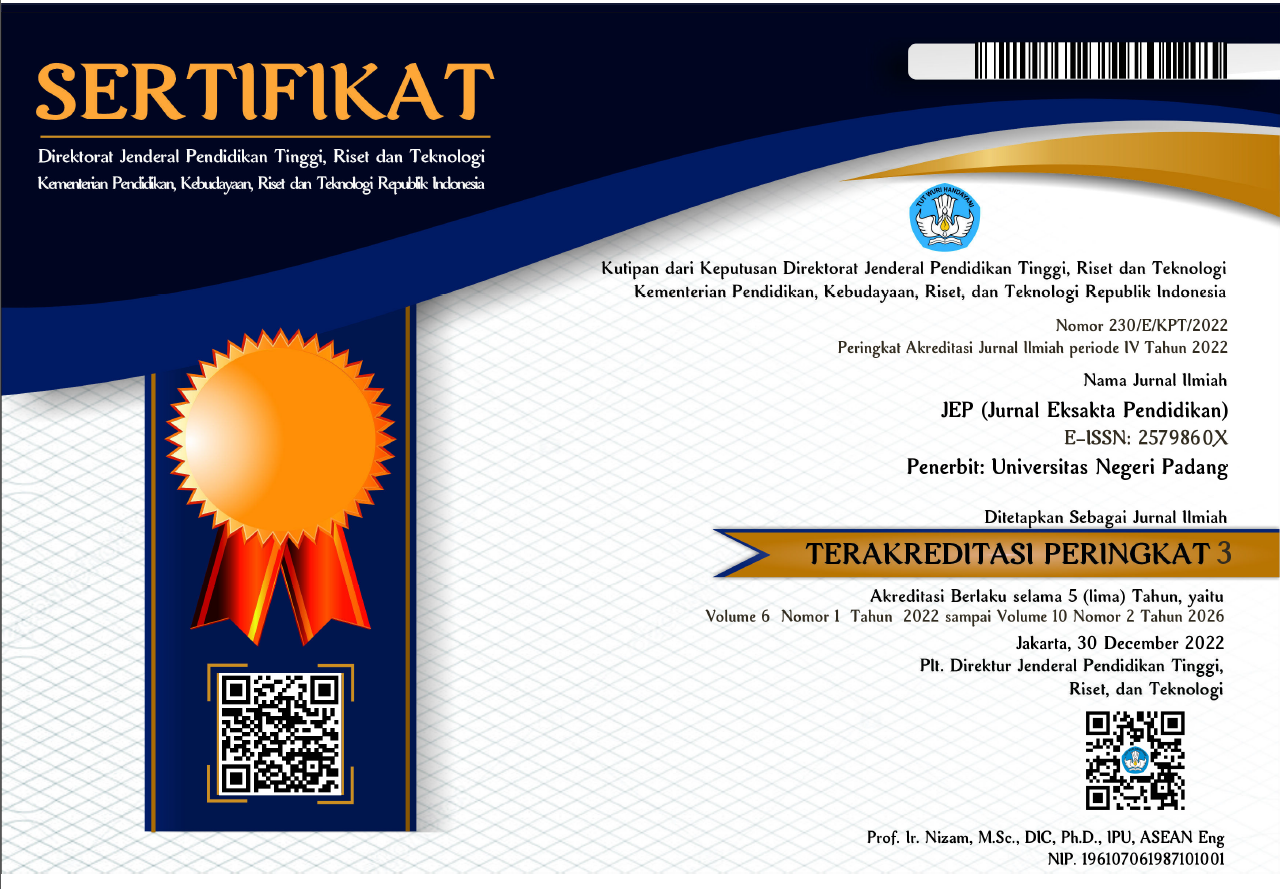Pemahaman Siswa Kelas XI SMA Unggulan Kota Padang Terhadap Konsep Reaksi Pengendapan pada Pembelajaran Materi Kelarutan dan Hasilkali Kelarutan
Abstract
This paper describes 11th grade students’ understanding of the concept of precipitation reaction at the end of the learning process of solubility and solubility product. Precipitation reaction is an important reaction in industry, pharmacy, and daily life. In the learning process, students are asked to predict the formation of precipitation based on their understanding of solubility and solubility product concepts. Thirty eleventh grade students in one of the best senior high schools in Padang were chosen as the subject of this study. Classroom learning process was observed and recorded. Data of students’ understanding were collected through a set of essay problems which was validated through expert judgment, and then integrated in students’ end-of-chapter test. Through qualitative analysis, this study revealed some mistakes and misconceptions that students have regarding the application of precipitation reaction concept, and possible sources of them. Recommendations for improving the quality of learning this concept in the future are provided at the end of the paper
Downloads
References
Basrowi dan Suwandi. (2008). Memahami Penelitian Kualitatif. Jakarta: Rineka Cipta.
Chang, R., Overby, J. (2008). General Chemistry: The Essential Concepts. 6th Ed. New York: McGraw-Hill Companies.
Chiu, M. (2005). “A National Survey Of Students Conceptions In Chemistry In Taiwan”. Chemical Education International. 6. (1). Paper based on the lecture presented at the 18th IC-CE, Istanbul, Turkey, 3-8 August 2004
Gronlund, N.E. dan Linn, R.L. (1990). Measurement and Evaluation In Teaching. 6th Ed. New York: Macmil-lan Publishing Company
Harris, D.C. (2010). Quantitative Chemical Analysis. 8th Ed. United States of America: W.H. Freeman and Compa-ny.
Holbrook, J. (2005). “Making Chemistry Teaching Relevant”. Chemical Educa-tion International. 6, (1).
Johnstone, A. H. (2000). “Teaching of Chemistry – Logical or Psychologi-cal?” Chemistry Education: Research and Practice in Europe. 1(1), 9 – 15. doi: 10.1039/A9RP90001B.
Kemendikbud. (2016). Peraturan Kemen-terian Pendidikan dan Kebudayaan No. 21 Tahun 2016 tentang Standar Isi. Jakarta: Kemendikbud
Nakhleh, M.B., Hinton, M.E. (1999). “Students’ Microscopic, Macroscopic, and Symbolic Representation of Chemical Reactions”. Chem. Educa-tor, 4, 158 – 167. doi: 10.1007/s00897990325a.
Sheehan, M. (2010). Identification of Dif-ficult Topics In The Teaching and Learning of Chemistry in Irish High Schools and The Development of An Intervention Programme To Target Some Of The Difficulties. Disertasi pa-da Department of Chemical and Envi-ronmental Science University of Umerick, Irlandia. Tidak Diterbitkan.
Wu, C. and Foos, J. (2008). “Making Chemistry Fun To Learn”. Literacy Education And Computer Education Journal (LICEJ). 1, (1), 3-7

This work is licensed under a Creative Commons Attribution 4.0 International License.




_(2579-860X).png)
_(2614-1221)1.png)




